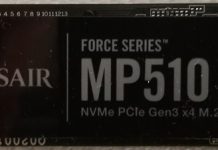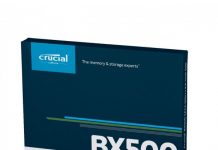|
|
ADVERTISEMENT
Review: Samsung 845DC PRO SATA 400GB Enterprise SSD |
Welcome to Myce’s review of the Samsung 845DC PRO 400GB SATA
Enterprise SSD (hereafter referred to as the 845DC PRO).
Excitingly, the 845DC PRO uses Samsung’s new 3D V-NAND. How
will it perform? Read this review for an authoritative performance assessment (Spoiler
– a new 4K Random Write King takes the throne).
Market Positioning and Specification
Market Positioning
This is how Samsung positions the 845DC PRO –

Specification
Here is Samsung’s specification for the 845DC PRO –

3D V-NAND
Credit goes to my Myce colleague Wendy for this brief
introduction to 3D V-NAND -
It's no secret that Samsung has been working on a new
type of NAND, dispensing with the 'planar' arrangement and the 'charge pump
device' (CPD), by moving to a 3D vertical stacking cylindrical cell arrangement
(V-NAND) where the cells are stacked vertically, with up to 32 layers, allowing
a much higher density. In V-NAND, the CDP is also gone, being replaced by a
Charge Trap Flash (CTF). A CPD stores the charge in a conductor where
imperfections in the material can cause electrons to leak, and thus reduce NAND
endurance. A CTF stores the charge in the isolating layer, where leakage is not
a problem. A CTF also requires much less voltage to store the charge, so as an
added benefit, V-NAND requires much less energy to store the charge.
Moving to a vertical cell stacking arrangement rather
than the planar design also has a huge advantage. Because stacking cells
vertically takes up less space, it has allowed Samsung to take a step back in
the cell node size, so instead of shrinking the current 19nm node size, Samsung
has been able to use a larger node size, most likely around 30nm. Increasing
the node size means better endurance. Couple the new CTF method of storing the
charge with the increased node size, and Samsung estimates that V-NAND could
have as much as ten times the endurance of NAND based on the 19nm planar
design.
Another advantage of using a larger node size, is that
NAND page programming times are reduced substantially. Typically, 19nm planar
NAND takes around twice the time to program a NAND page when compared to 30nm
3D V-NAND. The end result is you get higher performance which is much more sustainable.
The 845DC PRO uses the world’s first 24 layer 3D V-NAND
technology.
Product Image
Here are some pictures of the 845DC PRO we tested –


Now let's head to the next page, to look at Myce’s
Enterprise Testing Methodology.....

















